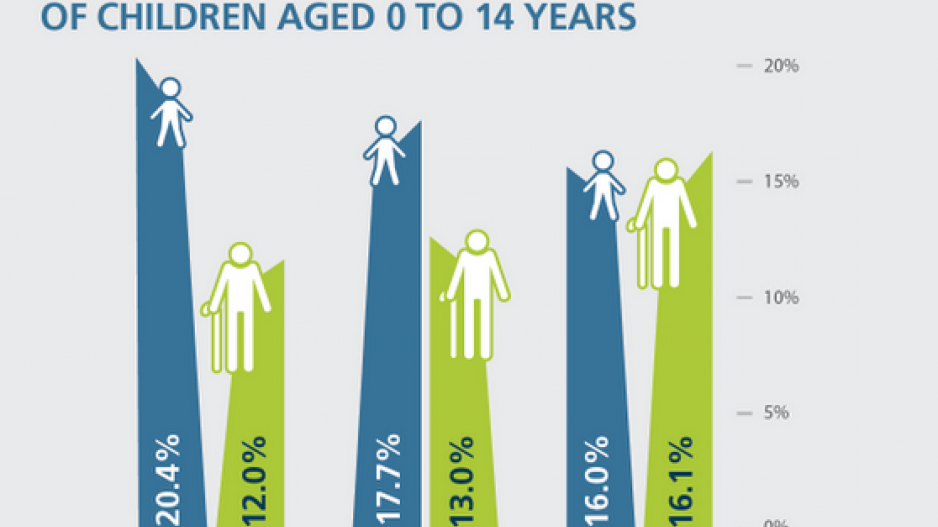(Graph: Statistics Canada)
Canada’s population is aging and for the first time ever, there are more seniors than children in the country, Statistics Canada announced September 29.
In July, the country’s population reached 35,851,774, and people over 65 accounted for 5,780,900 or 16.1% of the total. By comparison, 16.0% or 5,749,400 were children age 14 and under.
An aging population suggests a slower growing tax base as a lower proportion of people are working, said Sal Guatieri, director and senior economist for BMO Economics, but he said that doesn’t show the whole picture, particularly in the short term.
“We will have fewer people working, possibly, although there is a trend towards people living longer, working longer, so that may help,” he told Business in Vancouver.
“That said, you will have more people withdrawing income from their pension plans and from their RSPs.
“That is taxable income.”
He went on to say, that in about 10 years the tax system will begin to show signs of strain as the proportion of seniors reaches about 20% of the country’s total population by 2025. All is not lost, however, he said.
“Behind the seniors are the millennials, the ‘echo boomers,’ who are now getting their first jobs and starting their careers,” Guatieri said.
“That age group will tend grow at a reasonable rate at least over the next few years, so that will tend to support the tax base at least in the near term.”
Still, StatsCan said, Canada has one of the lowest proportions of seniors among G7 member countries.
Overall, Canada’s population grew 0.9% year-over-year, which is lower than the growth of 1.1% the year before.
“Despite this slowdown, Canada’s population growth remained the strongest among G7 countries,” Statistics Canada said.
In British Columbia, the population grew 1.0% after increasing 1.2% the year before. The province’s population makes up 13.1% of the total number of people in Canada.




